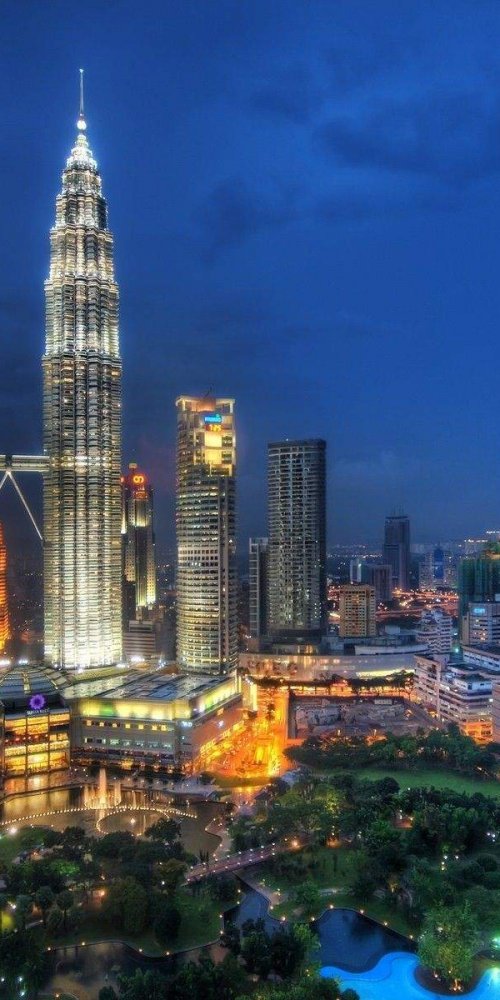

The moment you step into Kuala Lumpur’s transport hubs, a symphony unfolds: ticket barriers beep rhythmically as commuters swipe their cards; the gentle ringing of tram bells punctuates the air; and conversations bubble in a kaleidoscope of languages - Malay, English, Mandarin, Tamil, and many more. This city’s pulse is carried on its veins of bustling buses, sleek metro trains gliding underground, and colourful trams weaving through historic streets. The hum of movement is constant - an invitation for you to join in, to dive into a system designed to connect you effortlessly to KL’s heart and soul. The scent of street food mingles with the cool air-conditioned stations, promising adventures just a journey away. When I first climbed the cathedral tower in Kuala Lumpur, MY, it was the ease of transport that allowed me to hop between landmarks without a hitch. Here, navigating public transport becomes not just a means, but a memorable experience.

You might wonder why to opt for public transport in Kuala Lumpur, MY, amidst the surge of ride-hailing apps and taxis. First, consider the cost. You get to zip through the city for just a few ringgit, compared to the heftier fares of rideshares. It's a true wallet-saver, especially if you’re planning to explore multiple districts or visit the iconic Petronas Towers and bustling Bukit Bintang area.
Second, speed and convenience. The metro Kuala Lumpur, MY's backbone, is fast and punctual - dodging traffic jams is a breeze. When I first used the MRT Line to board the train near the Pavilion shopping mall, I was impressed by the frequency: trains every 4–5 minutes at peak. With an extensive network connecting key locales, you’ll find public transport faster than circling for parking or waiting in app-ride queues.
And beyond practicality lies an environmental angle. Using mass transit helps reduce KL's carbon footprint. The city is striving to green its transport landscape, meaning your choice supports eco-friendly commuting while you explore vibrant neighbourhoods. Moreover, cultural encounters on a bus, or a friendly chat while waiting at a tram stop, enrich your journey beyond mere movement.
Lastly, the experience itself. Public transport in Kuala Lumpur, MY offers a window into daily life, a chance to observe the rhythms of Malay culture fused with global influences. When you ride the monorail or the LRT, you’re travelling alongside locals, students, and workers alike – a dynamic city tapestry you simply can’t replicate from a car.
| Mode | Lines | Peak Frequency | Night Service |
|---|---|---|---|
| Metro (LRT, MRT, Monorail) | 6 (total) | 3–5 mins | No |
| Bus | 150+ | 10–15 mins | Limited routes till midnight |
| Trams | 2 heritage routes (being modernised) | 20 mins | No |
| Bike-Share | 3 providers | Availability varies | N/A |
Kuala Lumpur’s transit network is a multi-layered marvel. The extensive metro system - comprising LRT, MRT, and an iconic monorail - serves as the city's rapid transit backbones, moving thousands every hour. Buses complement these rails, reaching nooks where trains don’t, with frequent departures to ease your commute. Trams remain a charming, though limited, mode mainly for tourists, while bike-shares fit well for short hops in city parks and shaded avenues. Together, these modes ensure comprehensive coverage, helping you navigate Kuala Lumpur with ease and strategic planning.
Understanding peak and off-peak travel times can save you money and stress. Kuala Lumpur’s metro Kuala Lumpur, MY peak hours typically run from 7:00 to 9:30 AM and 5:00 to 7:30 PM on weekdays. During these windows, trains are more frequent but also more crowded.
Off-peak fares are slightly cheaper on certain bus routes though metro fares remain flat. Choosing to travel off-peak means more comfortable rides and quicker boarding times. When I commuted outside these hours, I enjoyed near-empty carriages and laid-back sightseeing from the tram routes Kuala Lumpur, MY.
Another tip: some passes waive time restrictions altogether, so investing in a day pass lets you explore flexibly without worrying about peak surcharges.
If you’re visiting for leisure, plan sightseeing and transit trips around off-peak hours (10:00 AM–4:00 PM). This way you avoid the bustle and have more space to absorb city vibes.

All metro Kuala Lumpur, MY stations feature elevators and ramps with dedicated spaces onboard trains. Station staff offer assistance if requested, making your journey smooth and inclusive.
Trams and buses accommodate prams but space is limited during peak. Folding prams are easier to manage on metro trains where priority seating is clearly marked.
MRT stations serving KLIA and KLIA2 airports provide escalators and lifts for heavy luggage. Allocate extra time during peak hours for boarding trains comfortably with your bags.
You can purchase bus tickets onboard from drivers using cash or tap your contactless transit card when boarding. Some routes also support app payments for convenience.
Most transit cards and passes are personalised or non-transferable. However, some group and tourist family passes allow shared use among immediate family or travel groups.
The metro is the fastest for long distances, combined with buses for last-mile connectivity. For short scenic rides, trams and bike shares add interesting options.
Contactless payments are accepted on the majority of trains and many but not all buses. Check signage or driver instructions to confirm before boarding.
Now that you’re armed with all the essentials about public transport in Kuala Lumpur, MY, why not share your stories and ask questions? Join our community by commenting below or signing up for our newsletter filled with insider tips for your travels. Public transport is more than just a route from point A to B - it’s your gateway to experiencing the bustling life, rich culture and hidden charms of this vibrant city.

Additional articles from our network with useful insights about Kuala Lumpur.